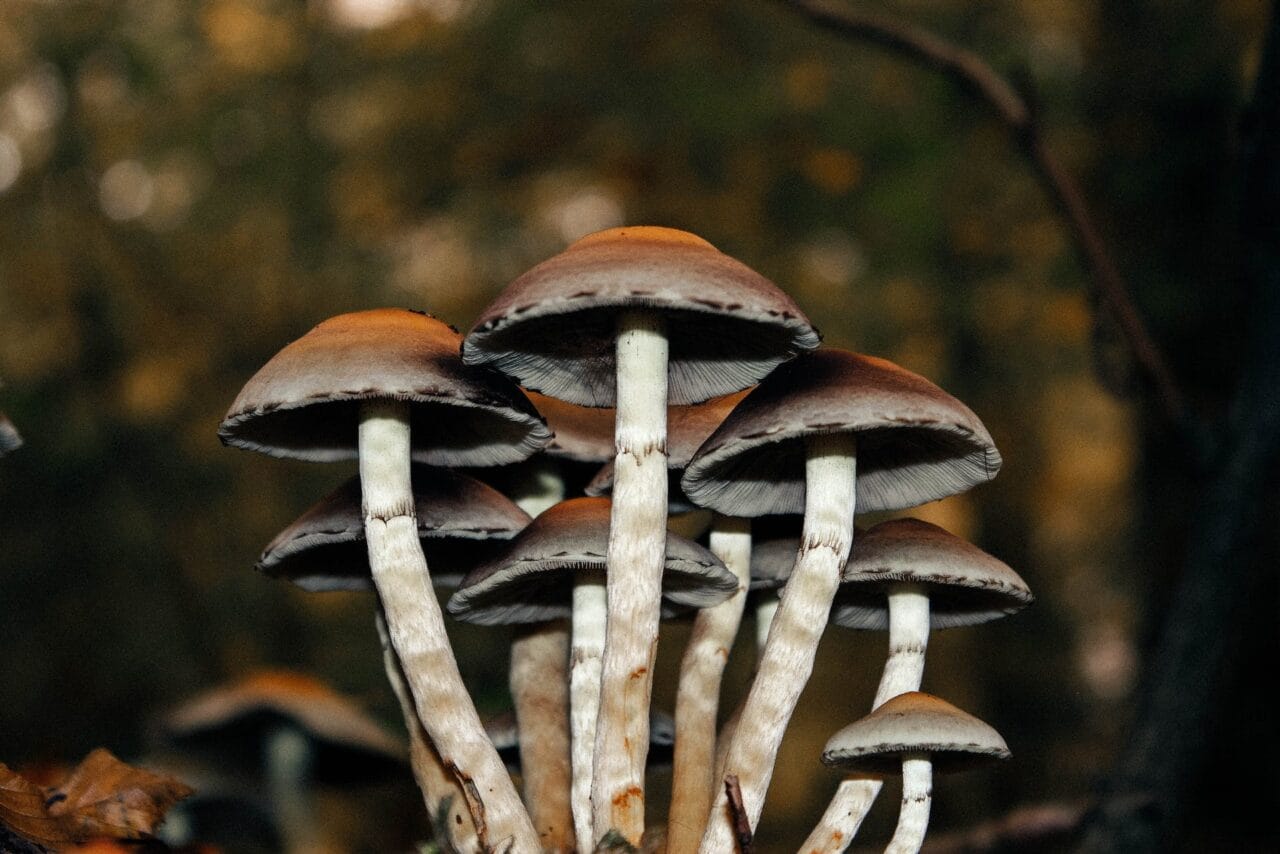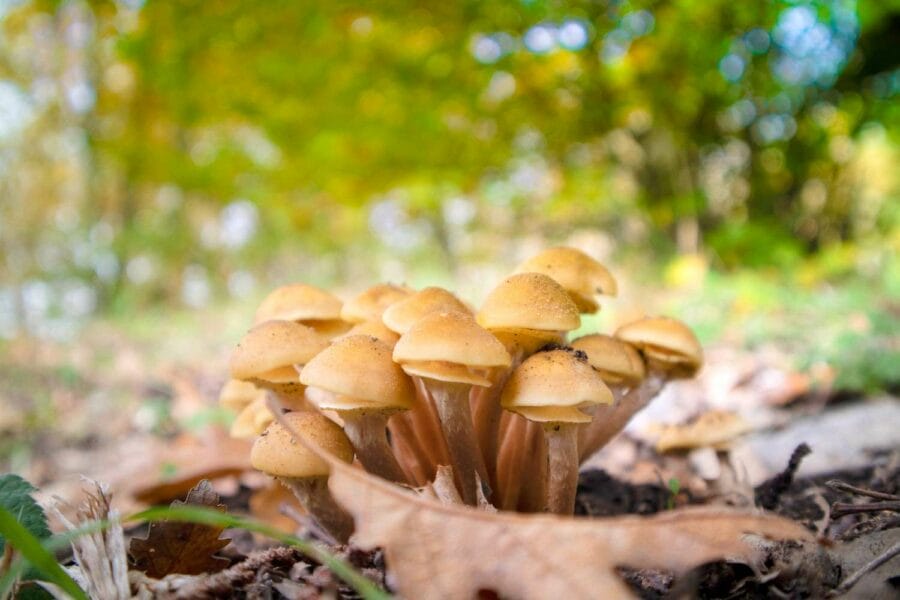Psilocybin, a psychoactive compound found in magic mushrooms, is commonly used recreationally to elicit feelings of euphoria and hallucinations.
Beyond its mind-altering properties, research has been conducted on the compound’s potential benefits for alleviating chronic pain.
This article discusses a case study which explores the potential of microdosing mushrooms in providing relief from chronic pain.
Key Takeaways:
- Microdosing mushrooms could potentially provide immediate and sustained pain relief.
- Psilocybin microdosing often has fewer side effects compared to traditional pain medications when given in small doses.
- Psilocybin interacts with serotonin 2A (5-HT2A) receptors, aiding in pain relief among other conditions.

The Study
The research, “Microdosing Psilocybin for Chronic Pain: A Case Series“, led by Dr. Matthew Lyes and his team at the University of California, San Diego’s Division of Pain Medicine, Department of Anesthesiology, focused on three patients who self-dosed psilocybin to manage their chronic pain symptoms.
Three Patients, Same Result – Reduced Chronic Pain
Patient # 1
| AGE/ GENDER: | 37 Male |
| TYPE OF PAIN: | Neuropathic pain appearing below a spinal cord injury site. |
| PAIN INTENSITY: | Initially ranged from 4 to 5/10, but escalated to 8/10 later in the day |
| PSILOCYBIN DOSE: | 250 mg of ground mushroom for less than 6 months |
| RESULT: | Discontinued prescribed pain medication, decreased muscle spasms, and improved bowel movement efficiency. No signs of rebound pain or withdrawal symptoms were observed. |
| The patient reported that while his regular medications just managed to mitigate the pain, psilocybin effectively eliminated it, reducing his average pain level from 5 to 0. | |
Case Study: Subject #2
| AGE/ SEX: | 69-year-old Female |
| PAIN TYPE: | Complex Regional Pain Syndrome (CRPS) |
| PAIN INTENSITY: | Typically a 5 to 7 on a scale of 10, with increases during activities and pain flare-ups |
| PSILOCYBIN DOSE: | 500 mg daily for 7-10 days with 2-3 day breaks, spanning over a year. Dose increases to 750 mg to 1 gram during pain flare-ups |
| EFFECT: | 80% decrease in pain for 3-4 hours, slowly returning to original levels after 12 hours. Complete pain relief (90%-100%) lasts 6-8 hours, returning to original levels after 18 hours. |
| Patient notes a decline in appetite without feeling nauseous. Difficulty in maintaining balance and disorientation is observed when the dose is increased (750 to 1000mg). | |
Case Study: Subject # 3
| AGE/ SEX: | 40-year-old Female |
| PAIN TYPE: | Lumbar radiculopathy and neuropathic pain |
| PAIN INTENSITY: | 8 on a scale of 10, peaking to 10 during physical activities |
| PSILOCYBIN DOSE: | 1000 mg from a mushroom-infused chocolate bar every two months. |
| EFFECT: | Significant reduction in pain without any psychoactive effects. An improvement in flexibility and functionality was noted. Pain slowly reverts to original levels over 2-4 weeks. Repeated dosing enhances pain management. |
| Patient does not report any significant physical, cognitive, or behavioural side-effects. Her emotional state remains consistent. She continues her regular SSRI dosage for managing depression during the psilocybin treatment. | |
Deciphering Pain Management through Psilocybin
Chronic physical and visceral pain can reinforce specific neural pathways due to peripheral and central sensitization, resulting in a constant experience of pain both physically and emotionally. Psychedelics such as psilocybin can activate 5-HT2A receptors, potentially resetting the brain regions linked with neuropathic conditions.
One patient reported experiencing pain relief that lasted for weeks. This suggests that direct stimulation of the 5-HT2A receptors can result in a central regulation of pain perception and synaptic adaptability.
Possible Side Effects of Psilocybin Compared to Standard Pain Relievers
| PSILOCYBIN (Based on Studies) | STANDARD PAIN RELIEVERS |
| Muscle spasms | Nausea |
| Appetite loss | Stomach discomfort |
| Confusion | Migraines |
| Impaired gait | Dependency |
| No mood changes | Drowsiness |
Potential Future Studies on Psilocybin
After reviewing the experiences of three individuals, the research team has identified specific areas of study that merit further investigation due to potential benefits.
- Small quantities of psilocybin could provide rapid and possibly enduring relief from neuropathic pain, without resulting in physical tolerance or addiction.
- Explore the effects of different treatment approaches in conjunction with psilocybin. For example, patient #3 reported an increased analgesic effect when psilocybin was combined with physical therapy.
- Even without psychotherapy, small amounts of psilocybin may relieve pain, as demonstrated in this case study. The researchers propose that incorporating therapeutic guidance could potentially enhance or extend the therapeutic outcomes.
Study Limitations
Despite the encouraging results noted in the patients, it’s essential to acknowledge the limitations identified in the study.
- The small study size may not fully represent the entire population suffering from neuropathic pain.
- The study didn’t include any participants who didn’t react to psilocybin.
- There were no assessments conducted before and after the treatment to evaluate the impact of psilocybin on psychiatric conditions like depression and anxiety.
- Most data were self-reported by the subjects.
- The interviewer’s presence and potential bias regarding psilocybin could have influenced the participants’ responses.
- The study did not assess the influence of the placebo effect.
- The study didn’t establish the quantity of psilocybin in each mushroom.
Microdosing Psilocybin from Mushrooms
In this particular study, the patients, identified as Patient #1 and #2, consumed a microdose of psilocybin in a powdered form, originating from dried mushrooms. On the other hand, patient #3 combined it with chocolate. There are many products designed specifically for psilocybin microdosing, and we have compiled a list of some notable ones below.
Dried Mushrooms
Despite the study not specifying the strain used, the one mentioned below serves as a good introduction for beginners.
- Golden Teacher: A common and widely recognized strain of magic mushrooms.
- Amazonian Cubensis: Renowned for its user-friendly nature, it can confer cognitive advantages.
- Cambodian: Use of the Cambodian cubensis mushroom for microdosing may improve concentration, social awareness, and mood.
Microdose Capsules
- Euphoria Psychedelics – Micro Calm Capsules: This blend contains Ashwagandha, Reishi, CBD, Valerian root, and Psilocybin Mushrooms, all scientifically shown to reduce anxiety and stress.
- Ground Sounds – Microdose Capsules – Champion Lover: This intriguing blend provides three dosage options: 50mg, 100mg, or 250mg of pure psilocybin combined with reishi, cacao, cordyceps, and maca.
- Kind Stranger – Brighten Capsules 250mg: The capsules contain the Golden Teacher strain, reputed for fostering clarity, amplified creativity, and enhanced focus.
Psilocybin for Pain Relief
While the research on mushrooms for pain relief is still in its infancy, anecdotal reports and small-scale case studies are offering promising results.
Such instances underscore the necessity for more comprehensive research into the potential benefits of psilocybin, class=”wp-block-list”>
Chronic pain management often benefits from psilocybin use.
The promising reports from the case study before psilocybin was widely accepted for pain relief, gave hope to those dealing with chronic pain.
Frequently Asked Questions
What are the effects of microdosing psilocybin?
Psilocybin activates a serotonin receptor known as “5-HT2A” in the prefrontal cortex, which leads to two main outcomes:
- Generation of “Brain-Derived Neurotrophic Factor” (BDNF)
- Enhanced “Glutamate” transmission
Moreover, psychedelics foster connections among brain regions that don’t usually interact. This unusual connectivity is a byproduct of psychedelics’ ability to decrease the activity of the “Default Mode Network” (DMN), which is associated with various mental activities, such as daydreaming, introspection, and contemplating the past and future.
What is the primary benefit of microdosing mushrooms?
Microdosing can help enhance mood, productivity, creativity, and concentration. Its most extensively researched benefit is its effect on mental health.
In November 2022, COMPASS Pathways, a mental health company, published the findings of their exhaustive phase 2b trial, a randomized and double-blind study. Their investigation indicated that a single dose of psilocybin led to substantial reductions in depressive symptoms compared to a placebo. Participants who received a higher dose of 25 milligrams showed a prolonged antidepressant response at the twelve-week follow-up.
A study published in the Psychiatry Research Journal stated that psilocybin is more effective than traditional antidepressant treatments.
How do you determine your dosage?
Start with a 0.1-gram dose of psilocybin mushrooms on the first day. If the expected effects are not achieved, you can slightly increase your dose by 0.05 grams on subsequent microdosing days until you find your optimal dosage.
Those with a history of using psychotropic drugs might need to increase the dosage to 0.5 grams to achieve the desired effects.
What precautions should be taken before consuming mushrooms?
class=”wp-block-list”>What is the suggested consumption frequency for microdoses of mushrooms?
Several well-regarded protocols recommend structured microdosing schedules for psychedelics. The primary difference between these protocols is the number of “off” days they include, which are the days when you abstain from microdosing.
The most popular protocols advise 1-3 days of rest between microdoses, aligning with the body’s natural tolerance mechanisms. The three protocols under consideration here are the Fadiman Protocol, the Stamets Stack, and intuitive microdosing.




